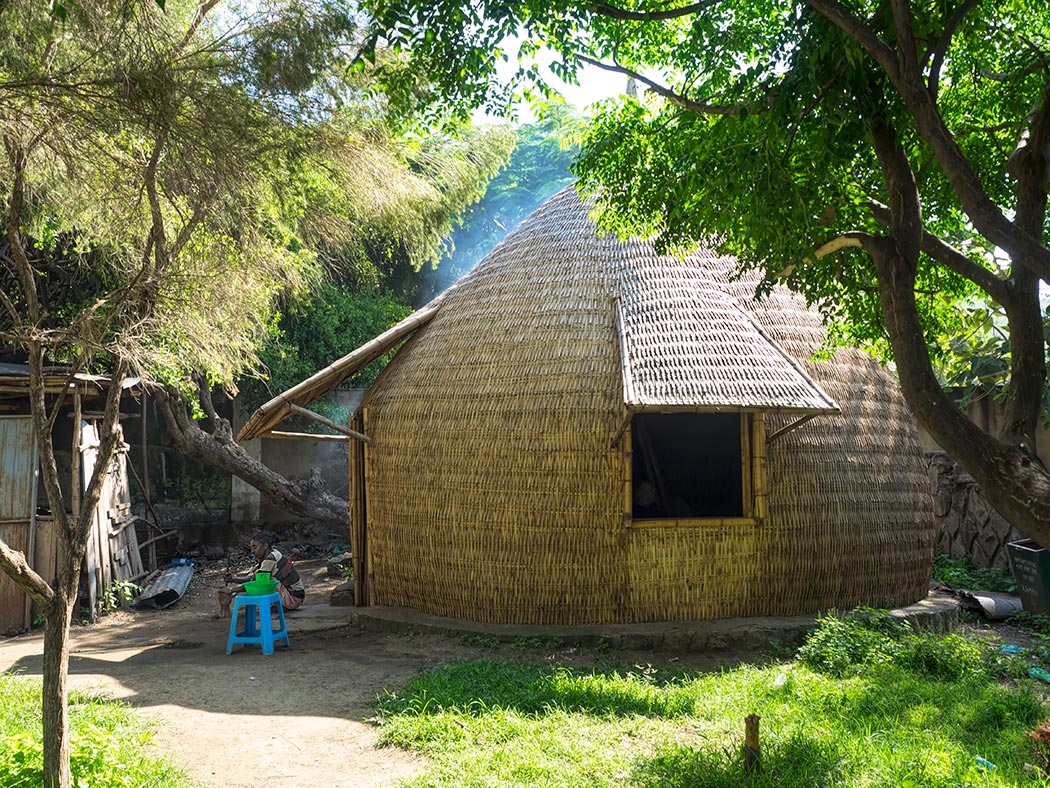In Amora Gedel National Park, on the shores of Lake Awassa in Hawassa, Ethiopia, I happened upon this this traditional woven hut, constructed in the style of the Sidama people. These descendants of the ancient Kingdom of Kush live around the lakes in Ethiopia’s Great Rift Valley. Today the Sidama and their sub-tribes number about eight million, making them the fifth largest ethnic group in Ethiopia. Living on some the most fertile land in Africa, for centuries the Sidama specialized in growing coffee, making them one of the most stable and self-sufficient tribes in Ethiopia. That is, until international coffee prices began to plunge in 2001.
Today they teeter on the edge of poverty, existing mainly on bread made from the pulp of the Enset (False Banana) stem. The Enset plant, however, is much more than a food source. Sidama men construct these beehive-shaped “tukul” by weaving Enset leaves around a sturdy bamboo frame. The design is ingenious. The pointed dome repels heavy rains and a small covered porch shades the front entrance. The hut is furnished with simple hand-hewn wood furniture that usually consists of bedsteads, tables, and stools. At night, young calves are brought inside for their protection; the family uses the right side, while the animals are kept on the left. The methods used to build Sidama tukul have been handed down through the generations, but very few men remain who have the skill to master the specific construction techniques required to build this traditional woven hut.

